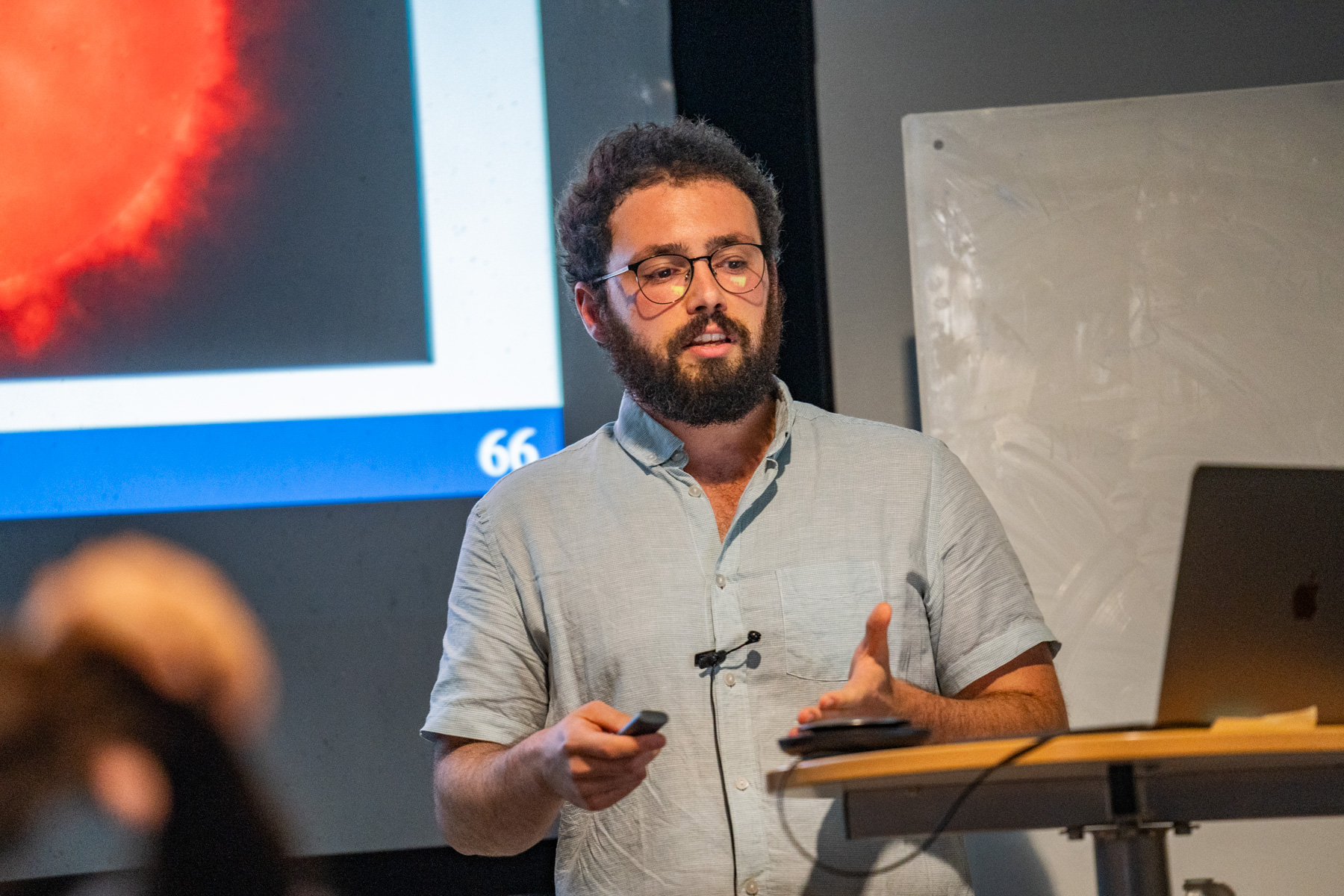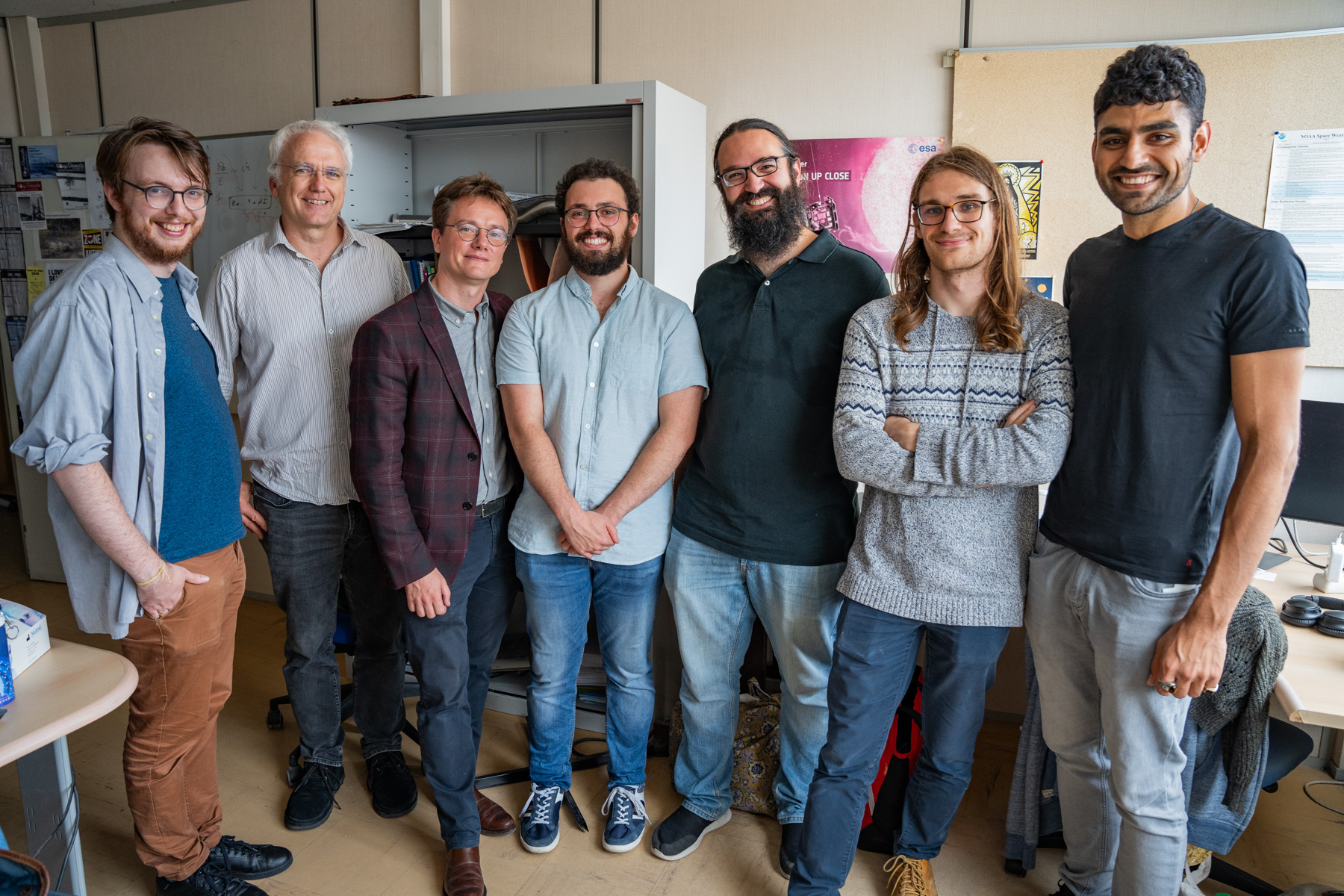This page summarises the work done during the preparation of my PhD
Modelling magnetar formation,
supervised by Jérôme GUILET and Raphaël RAYNAUD.
The final version of the manuscript is now avaible soon on
HAL.
Here are the different reports of the manuscript made my referees:
Laurène JOUVE and
Jose PONS.
The defense happened on the 5th October 2024 (see the
report and the
slides) and here are a few photos below.
The jury was composed of Geoffroy LESUR (president), Laurène JOUVE (referee),
Jose PONS (referee), Nanda REA (examiner), and Sam LANDER (eximaner).
Abstract
Magnetars are young isolated neutron stars harbouring the strongest magnetic fields
observed in the Universe (1014-1015G). Their dissipation powers a wide
range of high-energy emissions. Associated with a fast rotation, magnetars may be the
central engine of explosions which are more energetic than classical core-collapse
supernovae, such as hypernovae and superluminous supernovae. The origin of magnetar
magnetic fields remains an open question, but it is crucial to understand the luminous
phenomena they are associated with. Magnetic field amplification through dynamo action
in the proto-neutron star (PNS) is a promising mechanism to generate ultra-strong magnetic
fields in a progenitor harbouring a fast-rotating core. However, it is still unclear
whether the fraction of these progenitors is sufficient to explain the entire magnetar
population. Besides, the observation of supernova remnants associated with magnetars
indicates that magnetars mostly form in standard supernovae, with initial PNS rotation
periods slower than 5ms.
The main objective of this thesis is then to investigate an alternative magnetar formation
scenario involving a slow-rotating progenitor. Here, the PNS rotation is not determined by
that of the progenitor but by the accretion of fallback, which is the matter initially
ejected by the SN explosion that remains gravitationally bound to the compact remnant and
eventually falls back onto its surface. The induced shear triggers the so-called Tayler-Spruit
dynamo, while other dynamo processes --- driven by the magnetorotational instability and
convection --- are disfavoured in this configuration. Using a semi-analytical modelling of
the scenario, we show that magnetic fields as strong as in magnetars can be generated for a
PNS spun up to rotation periods smaller than 28ms. This first study demonstrates the
relevance of our scenario to form magnetars in supernovae with standard and extreme energies.
Nevertheless, the existence of the Tayler-Spruit dynamo has remained controversial and its
analytical models --- provided by Spruit 2002 and Fuller et al. 2019 --- rely on
untested physical assumptions. For these reasons, we performed 3D numerical simulations of
a simplified PNS interior to investigate this dynamo mechanism. Beyond demonstrating for
the first time the existence of the Tayler-Spruit dynamo in a configuration with a rotation
increasing with the radius, these simulations show a richness of dynamical behaviours and
dynamo branches associated with different magnetic field geometries, which were not predicted
by analytical models. We also find that the branch generating the strongest magnetic fields
is in global agreement with the predictions of Fuller et al. 2019.
By applying the numerical study to our scenario, we show that magnetic dipoles of typical
magnetars are generated for rotation periods smaller than 6ms. Therefore, our scenario
can explain magnetar formation in extreme explosions, but this new constraint is close to the
limit for magnetar formation in standard supernovae, revealing a tension between our scenario
and observations. The simulations also show that magnetic fields formed for slower rotations
are consistent with the observations of magnetars displaying weaker magnetic dipoles
(less than 4x1013G) while harbouring an about 100 stronger non-dipolar
component. This last result is supported by the first numerical investigation --- led in
collaboration with A. Igoshev --- of the long-term evolution of a magnetic field generated
by the Tayler-Spruit dynamo in a neutron star crust.




